7017SMM International Brand Management Assignment
Introduction
Branding is essential for any organisation that is willing to create its own unique identity in the market. In this regard, the rebranding of Designed by Ashley has been done with TRIBE being the rebranded name for entering the South African market. The branding follows a minimalistic approach, which helps the company to reflect both sophistication and simplicity involved in its products. The cultural aspects of South Africa in the branding of TRIBE are extensively reflected in the company’s branding process. Hence, the following international brand manual aims to explore the opportunities in the South African market for its expansion process.
Strategy Recommendations
Importance of brand equity
Brand equity is essential for any brand to create a space for themselves among their target customers and in the case of South African customers TRIBE aims to do exactly so. The brand has been designed in a manner, which South African customers would find aligned with their culture (Cho et al. 2018). This is quite necessary for the company being a new market entrant and this would also determine if the products and services offered by the company would be accepted or rejected by the target customers.
Recommended approaches to enhance brand equity
When it comes to brand equity there are 5 key aspects that TRIBE needs to elaborate on and express with its market communication which would essentially help in the development of the company’s brand equity.
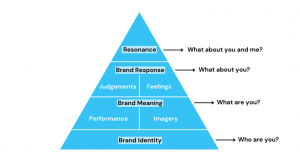
Figure 1: Keller’s brand equity model
(Source: Cho et al. 2018)
According to Keller’s brand equity model, brand identity, brand meaning, brand response and resonance are the key determinants of brand identity (Cho et al. 2018).
Brand meaning
Brand meaning signified the performance and imagery of the brand and in this regard, TRIBE has had a successful presence in the British market. TRIBE as a brand has been designed in a manner, which represents the culture of South Africa thereby helping to create direct contact with consumer perception. This aspect of TRIBE can be extensively communicated to the target customers in South Africa, which would help in creating the brand identity and recognition in the South African market (Yang et al. 2020).
Brand identity and image
Design by Ashley has a premium brand image which appears from the way the company has designed the website and displays its products. This can also be incorporated for branding TRIBE from scratch (Jung and Jin, 2022).
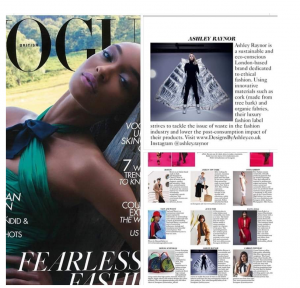
Figure 2: Ashley Graham as featured in Vogue and other magazines
(Source: Facebook, 2022)
The company has appeared in several fashion magazines, which have further increased its brand value and identity among target customers.
Market Audit
PESTLE
Political environment
The political environment in South Africa is stable compared to neighbouring African nations, which makes it a safer market. However, there have been cases of Xenophobia in South Africa due to which the company would need to ensure that local employees are present in larger numbers and in important posts (Chenzi, 2021).
Economic environment
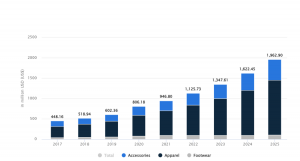
Figure 3: Revenue earned by different segments in the fashion retail industry of South Africa
(Source: Statista, 2022)
The above figure indicates that Apparel in South Africa has the largest market share among other segments in fashion retail. This is a major opportunity for the company to enter the market as it is still growing and has not been saturated yet.
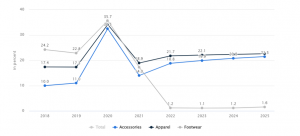
Figure 4: Revenue of different segments in the fashion industry of South Africa
(Source: Statista, 2022)
The above figure reflects the changes in revenue of different segments and footwear can be seen to have dropped significantly, however, apparel and accessories regained their former position.
Social
In terms of social consumers, behaviour can be taken as a metric and it can be established that South African consumers are quite inclined to their culture (Johnson and Koech, 2022). To this date, there are various tribes that continue to live their lives as they have been for several hundred years. It would b necessary for TRIBE to address these aspects.
Technological
In terms of technical aspects, there is not much that the company needs to focus on apart from digital marketing. The company can increase the overall appeal of their website and traditional marketing with the use of technology (Appiah-Nimo, 2019).
SWOT analysis
| Strength | Weaknesses |
| ● Presence of skilled labour
● Financial input ● Market knowledge |
● Lack of brand identity
● No prior experience in the market |
| Opportunities | Threats |
| ● Ability to appeal to the various tribes in South Africa
● Generate sales from the untapped segments in the market by targeting tribal population |
● Existing local manufacturers
● The chances of the target customers reject the brand |
Taking these aspects into consideration the company can enter the South African market and sidewise can target and create awareness in the market regarding sustainable fashion (Kim and Sullivan, 2019).
Brand response
If Design by Ashley’s brand response is taken into consideration it can be seen that it is only limited to the UK. In order to increase the brand response in the South African market, the company can choose to focus on an adaptation strategy. South Africa is home to many people who have a traditional link with different tribes in Africa. The company can make changes to the existing products and make their products appeal to the culture of different African tribes. Thus, keeping the various tribes that populate South Africa the rebranding has been done renaming the South African Subsidiary to TRIBE.
Brand personality
The company needs to adopt a unique identity in the South African market. This can be done by making the items more colourful, which is opposite to what Design by Ashley does in the markets in the UK. The appeals sold in the markets of the UK are more focused on solid colours and have less variety in colour schematics (Cooke et al. 2022). Colours like white and black have more influence on the apparel of TRIBE. However, in the markets of South Africa, the company needs to focus more on colours like red, yellow, green, and other colours that are more popular among the target customers in South Africa.
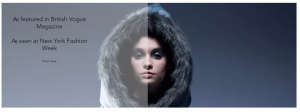
Figure 5: Current Band personality as reflected in the company’s website
(Source: Designs by Ashley, 2022)
Brand resonance
The above-mentioned changes to the company’s product and brand identity can effectively help to address the demands and preferences of South African customs and would play a major role in significantly increasing the brand presence in the South African market (Jelinek, 2018).
Retention of branding elements
The minimalistic approach that the company utilizes to communicate the brand values to the target customers can be retained while the colour schematics used in the website and the branding can be changed to South African themes (Consumers’Brand, 2018).
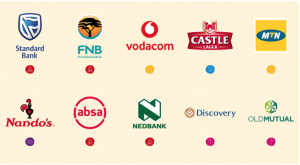
Figure 6: Top South African brands and their colour schematics
(Source: South Africa facts, 2019)
The above figure reflects the top brands in South Africa in different industries and it can be seen that these brands adopt a highly colourful approach in their branding process. Red yellow and green can be seen as the most common and widely used colour that the company is use. These colours have a significant impact on the psychological perspective of customising and help them to link with the brand. Design by Ashley needs to change its logo to TRIBE to suit the African market so that it looks less British and more African.
Technical aspects in the branding process
Technical aspects in the brand process can effectively enhance the overall outlook and appeal of the brand. Since South Africa is taken into consideration, it would be essential for the company to add South African elements into the branding process. In this regard, the South African flag can be taken as an inspiration to learn about the colours that denote the culture of South Africa.
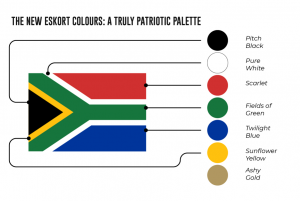
Figure 7: South African Colours are derived from the country’s Flag
(Source: Escort, 2022)
The colours present in the South African flag can be used as a reference for designing the different apples and products sold by the company. It can be stated that utilising these colours in the apparel and different accessories solved by the organisation can effectively influence the perception of South African customers and can also help them to align themselves with the brand (Quartier et al. 2021). These aspects linked with the technical design of the brand can also help in developing a trustworthy relationship with customers where they can relate to the products being more culturally aligned with African tribes and the local population (Tran, 2020).
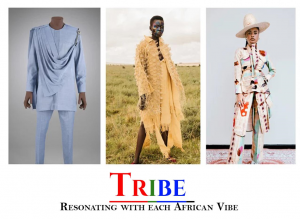
Figure 8: Rebranding of Designed by Ashley as TRIBE for South Africa
(Source: Learner)
TRIBE can utilise the above colour palette for their branding and designing of their products, which would effectively help in adopting a proper Pantone that would spread across the products developed for the South African market (Adams et al. 2021). The colours in the above palette have an autumn theme and considering the fact that these colours are popular in the South African market, this would help the company to familiarise its product with the target customers.
TRIBE can retain the fonts used for the logo, as it remains a neutral factor determining the consumer perspective of the brand. However, making changes to the logo the colour can effectively help in changing the brand appearance, which is quite essential for the organisation, especially in the markets of South Africa (Appiah-Nimo, 2019).
STP analysis
Segmentation
The company needs to address the B2C segment as this has the highest potential for growth in the market. Moreover, while exploring the B2C segment the company would get access to the millions of tribal people who are the target customers of TRIBE (Aziz et al. 2019)
Target
The tribal and local indigenous populations are the target customers of TRIBE. The brand has been specifically designed keeping them in mind and aims to produce handcrafted products that appeal to the different tribes and their sense of fashion (Johnson and Koech, 2022).
Positioning
The company would need to position itself as a brand composed of elegance, quality and innovation. This would help the company to bring the tribal people close to global fashion and also aims to expose African tribal fashion as a recognised fashion trend in the Country as well as globally with digital media exposure.
Conclusion
The findings from the above study effectively help in understanding the nature and culture of the South African market in which Design by Ashley through rebranding as TRIBE is supposed to expand its operations due to the extensive growth in the fashion retail industry. The various aspect linked with the company’s brand has been discussed in the above brand manual which effectively helps in understanding the kind of changes the company would need to make in order to enter and compete against other companies in the South African market.
References
Adams, C., Beckers, C., Charles, E., Deacon, J.H., Doucé, L., Eggink, W., Janssens, K., Khan, Z., Khaneja, S., Kim, S. and ten Klooster, R., (2021). The Value of Design in Retail and Branding.
Appiah-Nimo, K., (2019). Analysing the impact of operational challenges on value perceptions of South African luxury fashion brands. Journal of Design, Business & Society, 5(2), pp.169-192.
Aziz, M., Salloum, C. and Alexandre-Leclair, L., (2019). The fashion industry in Africa: A global vision of the sector. In Sustainable fashion (pp. 77-97). Palgrave Macmillan, Cham.
Chenzi, V., (2021). Fake news, social media and xenophobia in South Africa. African Identities, 19(4), pp.502-521.
Cho, E., Fiore, A.M. and Yu, U.J., (2018). Impact of fashion innovativeness on consumer-based brand equity. Journal of Consumer Marketing.
Consumers’Brand, P.A., (2018). Community Based Social Media Fashion Branding: Do Fashion Brands Heritage. Business Models and ICT Technologies for the Fashion Supply Chain: Proceedings of IT4Fashion 2017 and IT4Fashion 2018, 525, p.53.
Cooke, P., Nunes, S., Oliva, S. and Lazzeretti, L., (2022). Open Innovation, Soft Branding and Green Influencers: Critiquing ‘Fast Fashion’and ‘Overtourism’. Journal of Open Innovation: Technology, Market, and Complexity, 8(1), p.52.
Designs by Ashley, (2022). ASHLEY RAYNOR STUDIO. [Online]. Available at: https://www.designsbyashley.co.uk/ [Accessed 28 July 2022]
Escort, (2022). ESKORT CELEBRATES MZANSI WITH NEW VISUAL LANGUAGE. [Online]. Available at: https://eskort.com/education/eskort-celebrates-mzansi/ [Accessed 28 July 2022]
Facebook, (2022). Ashley Raynor. [Online]. Available at:https://m.facebook.com/ashleyraynor.ar/photos/britishvogue-dont-forget-to-grab-a-copy-of-this-months-british-vogue-to-find-us-/139285634087443/ [Accessed 28 July 2022]
Jelinek, J.S., (2018). Art as strategic branding tool for luxury fashion brands. Journal of product & brand management.
Johnson, S.K. and Koech, B.A., (2022). Influences of Cultural Attire in Contemporary Fashion for Posterity of African Culture.
Jung, S. and Jin, B.E., (2022). Slow fashion branding: understanding what consumers value most. Journal of Brand Management, 29(2), pp.141-149.
Kim, Y.K. and Sullivan, P., (2019). Emotional branding speaks to consumers’ heart: The case of fashion brands. Fashion and Textiles, 6(1), pp.1-16.
Quartier, K., Petermans, A., Melewar, T.C. and Dennis, C., (2021). The Value of Design in Retail and Branding. Emerald Group Publishing.
South Africa facts, (2019). Top 100 Companies in South Africa (2019). [Online]. Available at: https://southafricafacts.com/top-companies-in-south-africa/ [Accessed 28 July 2022]
Statista, (2022). Fashion. [Online]. Available at:https://www.statista.com/outlook/dmo/ecommerce/fashion/south-africa#revenue [Accessed 28 July 2022]
Tran, T.M.H., (2020). Appropriation or Appreciation? Examining the Phenomenon of Cultural Appropriation in Fashion Branding.
Yang, K., Kim, H.M. and Zimmerman, J., (2020). Emotional branding on fashion brand websites: harnessing the Pleasure-Arousal-Dominance (PAD) model. Journal of Fashion Marketing and Management: An International Journal.
Know more about UniqueSubmission’s other writing services:

